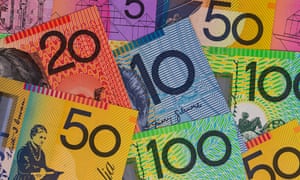Extract from The Guardian
Australia now has 33 billionaires, up from 14 since before the global financial crisis in 2008
Despite efforts by the treasurer, Scott Morrison, to portray Australia as a country in which income inequality is not worsening – contrary to the belief of International Monetary Fund officials – Oxfam Australia has released a new report revealing wealth inequality is still on the rise.
The report comes as new data shows the wealth divide in Sydney is becoming increasingly pronounced, with doctors and lawyers clustering in neighbourhoods close to the central business district, and essential services workers such as police, nurses and teachers being forced to settle in outer suburbs where property is more affordable, as reported by Fairfax Media.
The Oxfam Report, Growing Gulf Between Work and Wealth, has been released on the eve of the annual World Economic Forum, a gathering of the world’s political and business leaders in Davos, Switzerland.
The report, which relies on data from Credit Suisse, shows the level of wealth held by Australia’s richest 1% grew to 23% in 2017, up from 22% the year before, with the top 1% owning more wealth than the bottom 70% of Australians combined.
It shows wealth inequality in Australia has been on the rise over the past two decades, with the gulf between the amount of wealth held by the top 1% and the bottom 50% now the greatest at any time over this period.
The wealth share held by the top 1% in Australia has been growing almost continuously over the past two decades, while the wealth share held by the poorest 50% of Australians has been falling almost continuously over the past two decades.
The report also says income inequality has steadily climbed in Australia over time and, despite some fluctuations, is higher than at any time before the global financial crisis in 2008.
Australia’s income inequality compares poorly with other countries in the Organisation for Economic Cooperation and Development. The latest OECD data shows Australia’s Gini coefficient was 0.33 in 2014, ranking 22nd, behind the majority of the 35 OECD countries.
The Gini index is the most widely used measure of inequality. It looks at the distribution of a nation’s income or wealth, where 0 represents complete equality and 100 total inequality.
The report says last year saw the largest annual increase in the number of Australian billionaires and billionaire wealth since the start of the century – with an increase in total billionaire wealth of roughly $38bn.
The increase in wealth was enough to pay for more than half of Australia’s federal public health spending in 2016-17.
“Oxfam is committed to tackling poverty and inequality – but a broken economic system that is concentrating more wealth in the hands of the rich and powerful, while ordinary people struggle to scrape by, is fuelling an inequality crisis,” said Helen Szoke, Oxfam Australia’s chief executive.
“Over the decade since the global financial crisis, the wealth of Australian billionaires has increased by almost 140% to a total of $115.4bn last year. Yet over the same time, the average wages of ordinary Australians have increased by just 36% and average household wealth grew by 12%.
“The richest 1% of Australians continue to own more wealth than the bottom 70% of Australians combined. While everyday Australians are struggling more and more to get by, the wealthiest groups have grown richer and richer.”

No comments:
Post a Comment